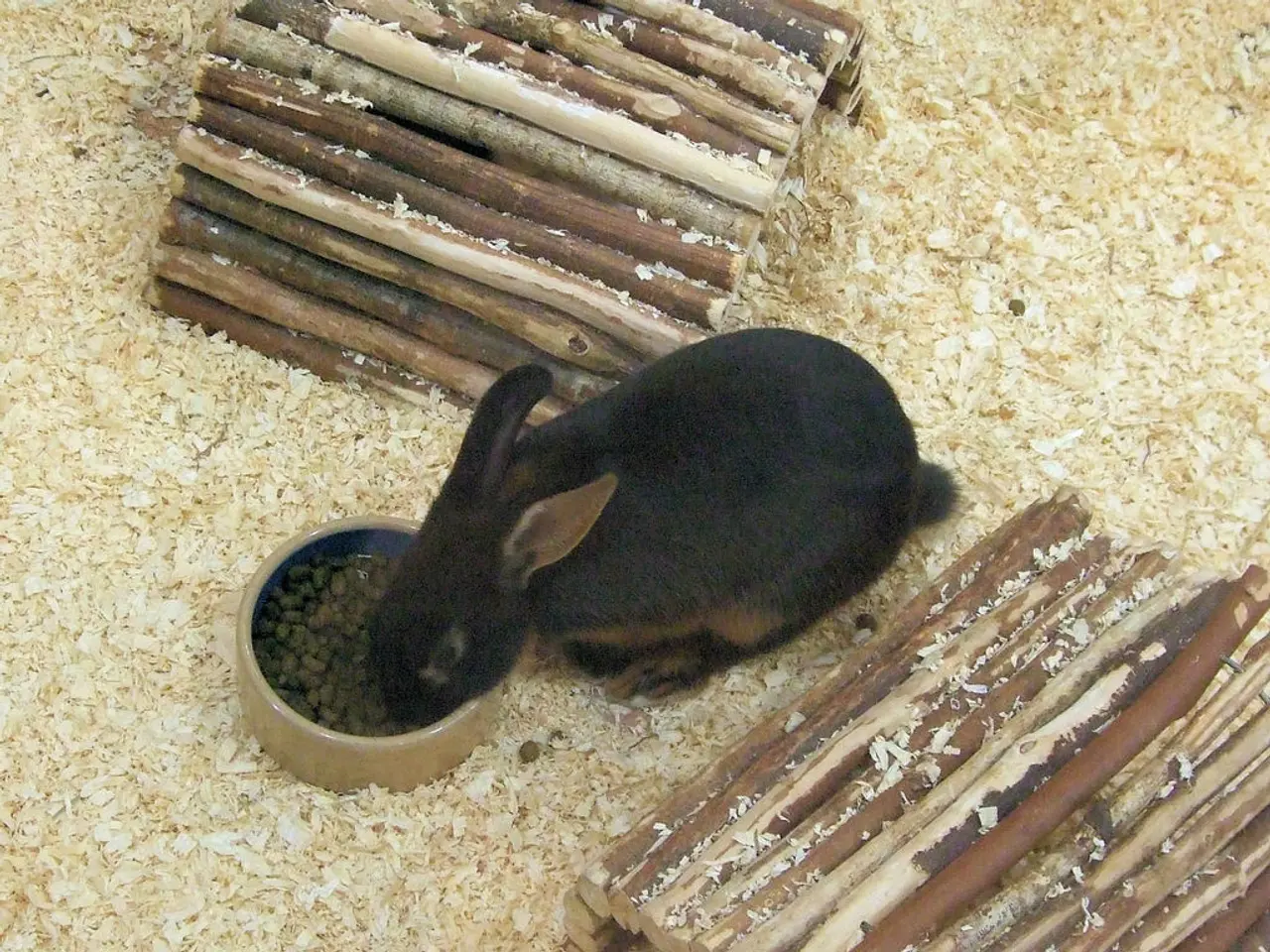Rabbits and their fecal consumption habits explored: Is it common or not?
In the fascinating world of rabbits, one behaviour that stands out is their practice of eating their own soft, brown raspberry-like fecal pellets, known as caecotrophs. This peculiar habit, known as coprophagy, plays a crucial role in their health and growth.
Caecotrophs are formed in the cecum, a part of the rabbit's digestive system, and act as a form of nutrient recycling. These nutrient-rich pellets contain additional nutrients, proteins, and vitamins that are produced during their digestive process[1]. By eating their caecotrophs, rabbits maximize nutrient absorption from their fibrous diet.
The quality and quantity of caecotrophs a rabbit produces and consumes are influenced by the energy density and balance of their diet. If a rabbit consumes a large amount of caecotrophs, it may indicate a diet that lacks sufficient energy density, prompting the rabbit to compensate by re-eating these nutrient-rich pellets[1][4].
However, several factors can prevent rabbits from eating their caecotrophs. These include poor diet balance, health issues, environmental and behavioural factors, and stress[3]. A diet that is too high in treats or starchy vegetables can disrupt digestion and lead to overproduction or changes in the quality of caecotrophs, which may deter rabbits from consuming them[4].
Health issues such as dental problems, obesity, arthritis, or joint pain can make it difficult for rabbits to reach and eat their caecotrophs[3]. In addition, environmental factors such as stress or changes in environment might cause rabbits to stop eating caecotrophs, leading to potential health problems due to missed nutrient intake[3].
Failure to consume caecotrophs can result in nutrient loss and potential digestive issues, highlighting the importance of monitoring diet quality and rabbit health to ensure proper caecotrophy behaviour[3][4].
Rabbits are clean animals and prefer to have designated areas with litter trays for urine and fecal poops. It is essential to provide a rabbit litter box, know how to clean a rabbit cage, and how to litter box train a rabbit.
In terms of diet, rabbits should be fed correctly, with pellets making up only 5% of their diet, and hay making up 85%. A rabbit's environment should allow them to safely eat their caecotrophs. Rabbit enclosures should be at least 3m x 2m x 1m high and provide games, hides, tunnels, foraging and grazing opportunities, places to sleep, dig, and run around, and a companion rabbit.
Overfeeding pellets or muesli, or lack of enough hay/grass, can cause rabbits to not eat their caecotrophs. In such cases, rabbits may need a change of diet, weight loss plan, or veterinary treatment.
Rabbits are crepuscular, most active at dawn and dusk, but will eat their caecotrophs throughout the day and night. A healthy rabbit produces more than 300 round fecal poops daily. Rabbits not eating their caecotrophs may indicate an incorrect diet or medical causes, potentially leading to serious health issues such as flystrike, which requires veterinary attention.
In conclusion, understanding the importance of caecotrophy in rabbits and the factors that can prevent them from eating their caecotrophs is crucial for maintaining their health and well-being. Ensuring a balanced diet, a clean and safe environment, and regular veterinary check-ups can help prevent issues related to caecotrophy.
Read also:
- Wawa avian tests positive for West Nile disease
- The market for Kraft Lignin is projected to increase at a rate of 7.2% each year until 2034.
- Revising hair care practices with cynorrhodon extracts for addressing hair fragility
- Filipino Card Games Find Their Home at Gamezone, Offering an Unmatched Experience!







